Best Beef Cut for Hot Pot
A savory broth filled with meat, seafood, and vegetables, hot pot is a favorite among social gatherings throughout Asia. Although there are countless hot pot styles in Asia, this guide will be focused on Chinese hot pot.
China has a seemingly endless amount of regional hot pot variations. In northern China, lamb is the meat of choice, cooked quickly in a subtly flavored broth. In southern China, hot pots packed with fish and shellfish are a common sight on dining tables. Sichuan hot pot, perhaps the most popular version, features fiery broth filled with mouth-numbing Sichuan peppercorns, dried chilies, and spicy red oil. There's even dry pot, which incorporates hot pot ingredients and spices into a fragrant stir fry.
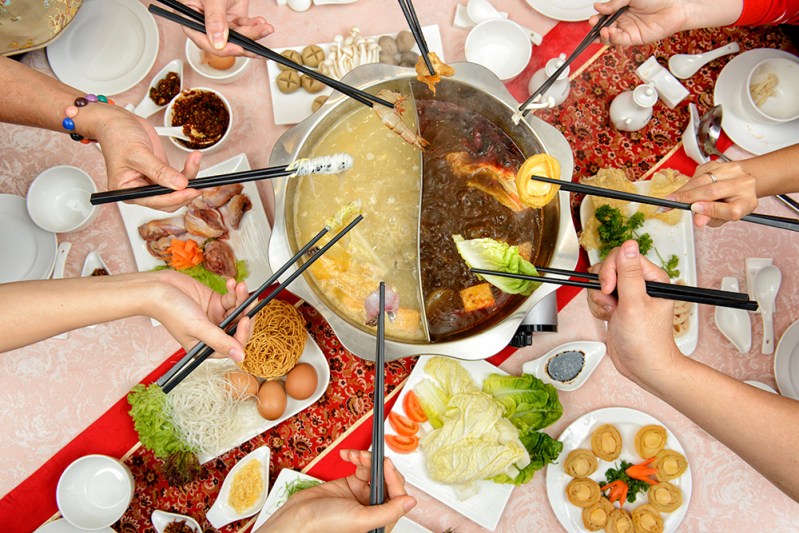
Hot Pot Equipment
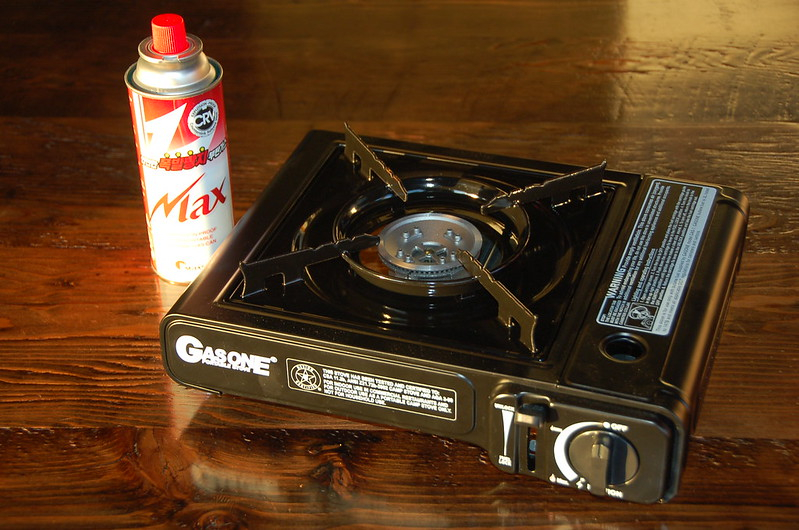
Like Korean barbecue, Chinese hot pot is also cooked tableside by each diner. The most common device is the portable butane burner. These burners are affordable and offer good control of the flame, making boiling or simmering a foolproof endeavor. Keep in mind that these burners don't come with butane. Canisters must be purchased separately.
Although any pot can be used, it's important to remember that hot pot is meant to be eaten table side in a social setting. The height and width of the pot (at least twelve inches across to feed about four to six people) should be suitable for individuals to both place and cook their own ingredients. You can purchase pots specially designed for hot pot — these pots will feature a divider in the middle to allow two separate broths (a common combination is a spicy and non-spicy broth).
Another useful tool are small strainer ladles. Some ingredients take longer to cook while others can fall apart easily during simmering. The use of a strainer allows the diner to both properly cook and find the ingredients when done.
Broth
For a simple broth, boil plain water with a combination of raw garlic, scallions, and ginger. Japanese kombu kelp is also great, lending a subtle umami flavor to the soup.
For more spice, add a combination of fragrant chili oil, spices, and aromatics. The most convenient way to achieve this is to purchase a ready-made hot pot soup mix at your local Chinese market. Lee Kum Kee, a Hong Kong based company, has a variety of ready-made broth mixes available ranging from seafood flavor to spicy Sichuan. Another popular brand is Little Sheep Mongolian Hot Pot, which does a fantastic spicy Sichuan version filled with numbing peppercorns and dried chilies.
Ingredients
For the best hot pot experience, it's important to have a good balance of different ingredients. The joy of hot pot is interlacing between bites of meat, vegetables, and seafood. Thinly sliced meat cooks fast while ingredients like potatoes or meatballs are more time-consuming. Noodles should be added at the end of the meal to take advantage of the full flavor of the broth.
Meat
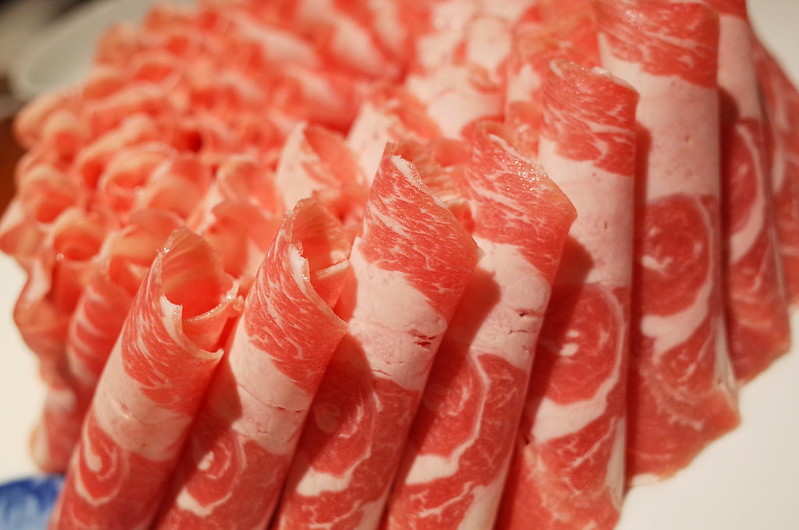
The most widely used meats for Chinese hot pot are beef, lamb, and pork. Any local Chinese market will have thinly sliced meat available in the meat aisle. If you want to slice your own, freeze the meat (ideally half-frozen) before slicing. This technique enables thinner slicing.
Meat is cooked either by "swishing" your slice with chopsticks in the hot broth or by placing it in a small strainer ladle. This technique allows better control over the desired doneness of the meat. You can also add larger quantities of meat into the pot at once, although this method isn't recommended if using more expensive cuts as it can overcook quickly.
Fat and marbling is key for hot pot meat. For beef, use ribeye, brisket, or beef belly for that balance of lean and fat. Leaner cuts like sirloin or eye of round can also work, although the diners should take extra care not to overcook them. For pork, use thinly sliced pork belly, shoulder, or loin. Finally, lamb, the meat that separates Chinese hot pot from most Japanese and Southeast Asian versions, is widely eaten in both Sichuan and northern Chinese hot pots and excellent cooked in a spicy broth. For the best lamb cuts, use either the leg or shoulder.
Animal offal cuts like liver or kidneys are also popular options in Chinese hot pots. These can be purchased by more adventurous eaters at any Asian market. Be sure to slice them thin to ensure the best texture.
Seafood
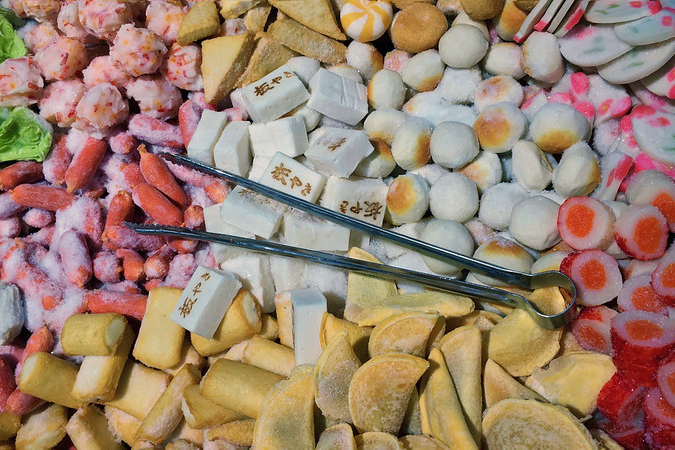
Fish is a great addition to hot pot but it's important to choose a species with firmer flesh. Flounder, although delicious, is too delicate for hot pot. Instead, firmer fish like salmon, cod, or halibut are better choices.
Any shellfish, ranging from shrimp or crab to clams will be excellent for hot pot. Chinese hot pot is all about the combination of flavors so it's perfectly fine to mix seemingly separate ingredients like shrimp and lamb. If you're looking for a more classic flavor combination, use pork with shellfish.
A distinct element of Chinese hot pot is fish and shellfish balls. These are made from pounded fish or shellfish molded into balls with a distinct bouncy texture. Some variations are even filled with corn or pork. These seafood balls are available ready-made at any Chinese grocery.
Vegetables
The variety of vegetables used for hot pot is endless. Leafy greens like napa cabbage or chrysanthemum greens are classic additions. Potatoes, taro, lotus roots, and corn are delicious when simmered in broth.
There's a strategy for hot pot vegetables and it comes down to cooking time and flavor. Root vegetables and corn take longer to cook, so these should be placed into the pot first. Greens are best eaten later in the meal, after some of the meat and seafood. The quick-cooking greens will benefit from the umami of a well-simmered broth.
Tofu and Noodles
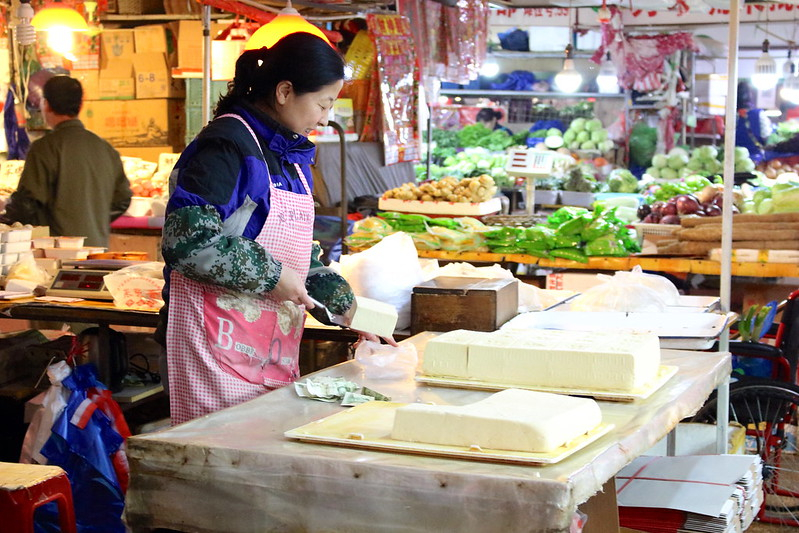
Soy products are a huge part of the Chinese diet so it should be no surprise that hot pot is a delicious vehicle for these ingredients. Be sure to use firm tofu as the texture will stand up during cooking. A trick for tofu is to freeze it beforehand. Frozen tofu has a completely different texture (like a sponge) that soaks up the broth when cooked. Just be careful to fully defrost the tofu before cooking. Fried tofu puffs, tofu wedges, and pleasantly chewy tofu skin are also great hot pot additions.
Noodles should be added at the end of a hot pot meal. This allows the noodles to soak up the finished flavor of the soup. If available, use any Chinese variety of white noodles. Japanese udon noodles are a great substitute.
Sauces
One of the best and most fun elements of hot pot is the sauce. The best way to construct your own sauce is to obtain a diverse amount of ingredients. Soy sauce, sesame oil, chopped raw garlic, hot sauce, chili pastes, rice vinegar, and fresh herbs like cilantro and scallions are all fantastic.
A Chinese favorite is the combination of thick sesame paste and a Chinese barbecue sauce called sa cha jiang. Unlike American barbecue sauce, sa cha jiang is not sweet. Instead, it's a chunky and spicy sauce that blends seamlessly with sesame paste. Combine the two sauces with a dash of soy, cilantro, and garlic for an all-purpose dipping sauce.
How to Set the Table and Etiquette
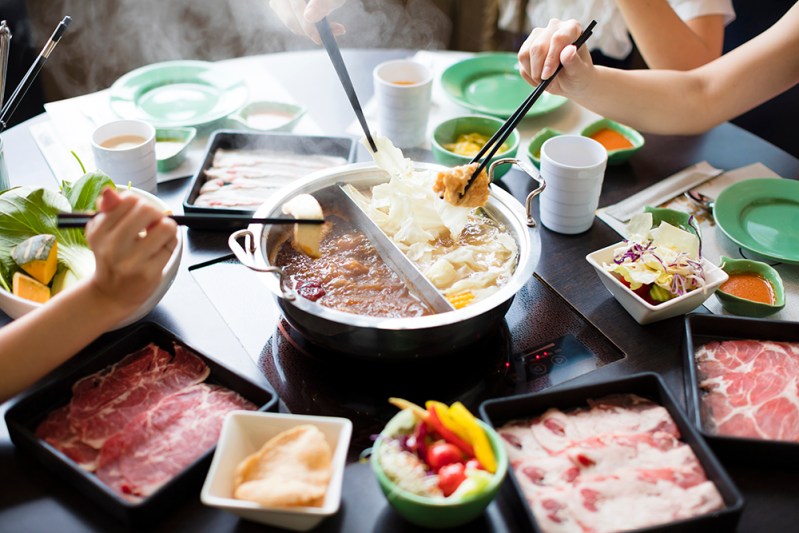
Because hot pot is designed to be cooked tableside by individual diners, the table setup is very important. The pot should be placed in the center of the table or at a location where all diners can have reasonable access. Plates of ingredients should be evenly divided so all diners can help themselves according to their own preferences.
Etiquette is also important. Use a strainer to find ingredients in the pot instead of fishing for it with your personal chopsticks. It can also be helpful to have separate utensils for handling the raw ingredients (meat especially). Finally, try not to snag someone else's ingredient in the pot.
Editors' Recommendations
- The 5 Best Grilled Chicken Salad Recipes for the Summer
- Kim Kardashian Now Beyond Meat's Chief Taste Consultant
- 9 Best Air Fryers With Rotisserie of 2022
- We Found The Best Grilled Corn On The Cob Recipes
- This is the Best Wood for Grilling and Smoking, According to an Expert
Source: https://www.themanual.com/food-and-drink/chinese-hot-pot-guide/#:~:text=Fat%20and%20marbling%20is%20key,belly%2C%20shoulder%2C%20or%20loin.

0 Response to "Best Beef Cut for Hot Pot"
Post a Comment